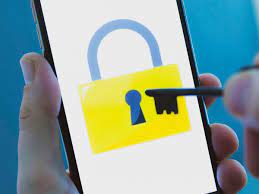What is a Wallet Address? Understanding the Basics

In the world of cryptocurrencies, wallet addresses are essential for sending and receiving digital assets. A wallet address is a unique string of characters that serves as an identifier for your digital wallet. It acts as a virtual location where you can store, send, and receive cryptocurrencies such as Bitcoin, Ethereum, and others. In this article, we will explain what a wallet address is, its importance, and how it works.
What Does A Wallet Address Look Like?
A typical wallet address consists of a combination of letters and numbers ranging from 26 to 35 characters long. It is important to note that a wallet address is case-sensitive and must be entered exactly as it appears when sending or receiving funds. The format of the wallet address may vary depending on the cryptocurrency being used.
For example:
– A Bitcoin wallet address may look like: 1A5oHEy8WSCs1TFY7V4aM8ewec3JfZ54SD
– An Ethereum wallet address may look like: 0x927238c91023fDhf392837df2W28DU8238d
The Importance of Wallet Addresses
1. Enhanced Security: Wallet addresses add layers of security to your digital assets by providing a unique identifier for each transaction. This ensures that only you have access to your funds. Furthermore, most wallets use cryptography to secure your private keys, making it virtually impossible for malicious actors to steal your funds.
2. Privacy Protection: With wallet addresses, transactions are not directly linked to an individual’s identity. This non-personally identifiable information provides much-needed privacy for individuals when transacting in cryptocurrencies.
3. Easy Transferability: Wallet addresses enable seamless money transfers between users without relying on traditional banks or financial institutions. The unique identifier assures that a user’s asset reaches its intended destination with ease and accuracy.
How to Set Up and Use a Wallet Address
In order to set up a wallet address, you first need to choose a cryptocurrency wallet that supports the specific digital asset you want to use. There are numerous options available, including hardware wallets, software wallets, and even paper wallets.
Once you have chosen your wallet, follow the steps below:
1. Download and install the software for your chosen wallet or create a hardware or paper wallet.
2. Generate your public and private keys, ensuring you securely store your private key.
3. Copy your wallet address (the public one) and use it to start sending and receiving assets.
When transferring cryptocurrencies, always double-check the wallet address is correct. If you enter an incorrect address, your funds may be irretrievable. Hence, it is crucial to exercise due diligence when handling wallet addresses.
In conclusion, a wallet address serves as a unique identifier for your digital wallets when sending and receiving cryptocurrencies. With strong security protocols and privacy protection features in place, using cryptocurrency wallet addresses not only secures your digital assets but also gives you complete control over them. Always remember to keep your private keys secure and double-check the accuracy of wallet addresses before initiating transactions.




